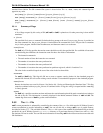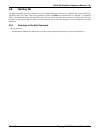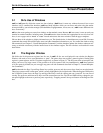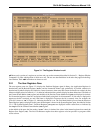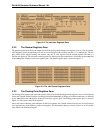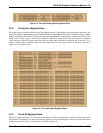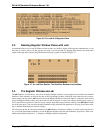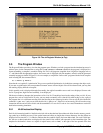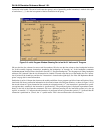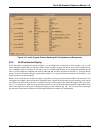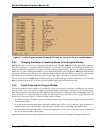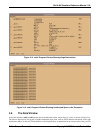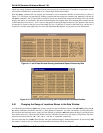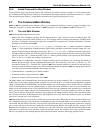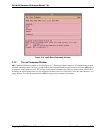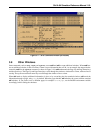
Copyright © 2000 Hewlett-Packard Co. Screen Presentation 3-7
Ski IA-64 Simulator Reference Manual 1.0L
instruction in the bundle. The end of each instruction group (a unit of potentially parallel execution) is marked with a pair
of semicolons (“;;”) after the last operand of the last instruction in the group.
Ski uses the first few columns for source code line numbers. Ski also uses the first column to show breakpoint locations
for IA-64 assembly language instructions, numbering the breakpoints “0” through “9.” IA-64 breakpoint commands
include bs, bD, bd, and bl, and are described in Section 8.3, “Program Breakpoints”. For the purpose of setting breakpoint
addresses, Ski “pretends” that the slot 0 instruction in a bundle is located at the first byte of the bundle, the slot 1 instruc-
tion is located at the fourth byte, and the slot 2 instruction is located at the eighth byte. See “How Ski Implements Break-
points” on page 8-6 for more information.
Predication is an IA-64 feature that increases the usable parallelism of user programs and allows better utilization of func-
tional units. Ski shows predication information in the second column of the Program Window, as shown in Figure 3-10. If
the second column of a given instruction line contains an exclamation mark (“!”), the instruction is predicated on a predi-
cate register that is currently 0: the instruction is “predicated off”. The predicate register is displayed in parenthesis imme-
diately to the left of the instruction mnemonic. Ski uses a different encoding for the instruction pointed to by the ip
register: an asterisk (“*”) indicates that the instruction is predicated off and a greater-than symbol (“>”) indicates that the
instruction is predicated on. (That is, the “>” symbol means “This is the next instruction to be simulated.”)
Figure 3-9.
xski
’s Program Window Showing Part of an IA-64 “hello world” Program



